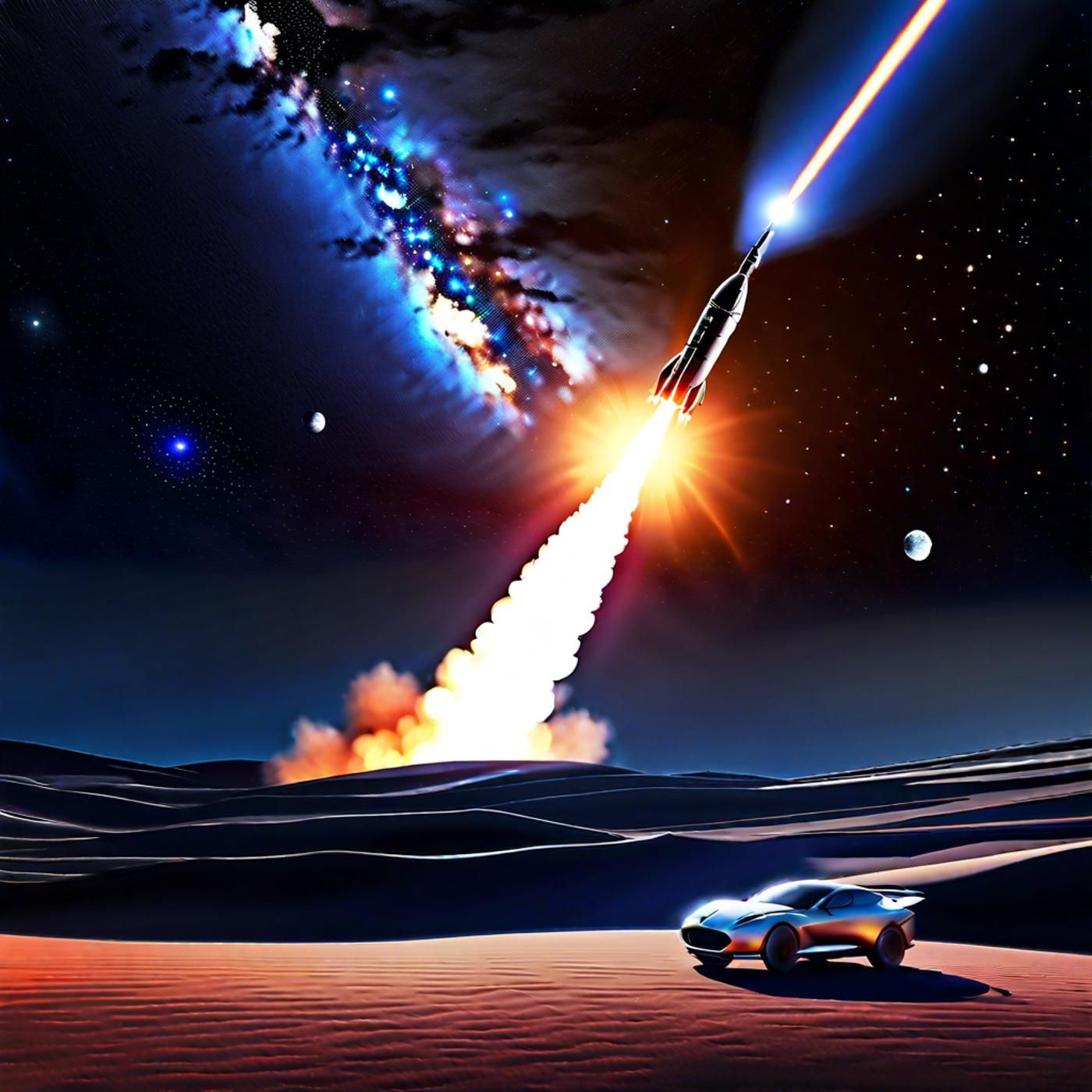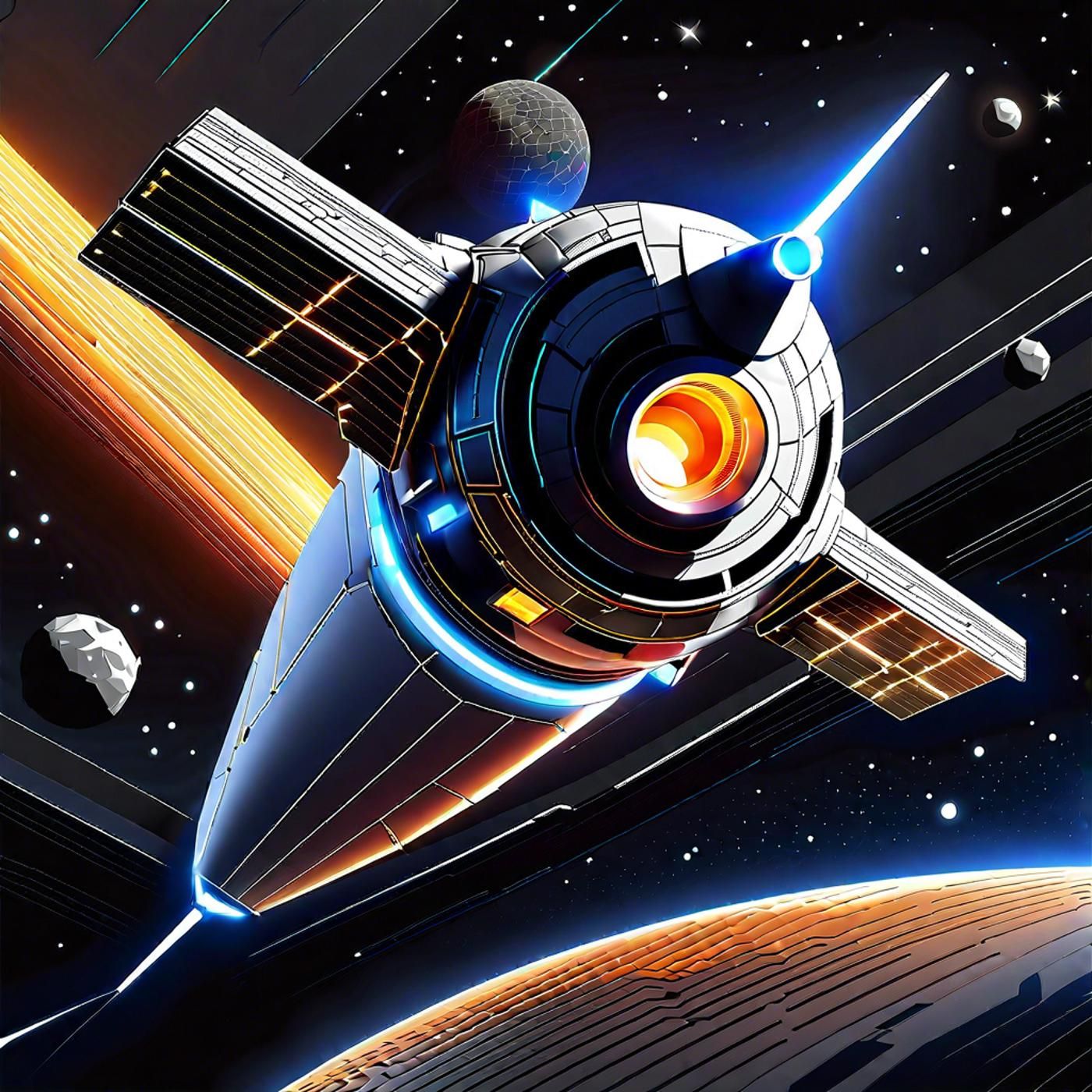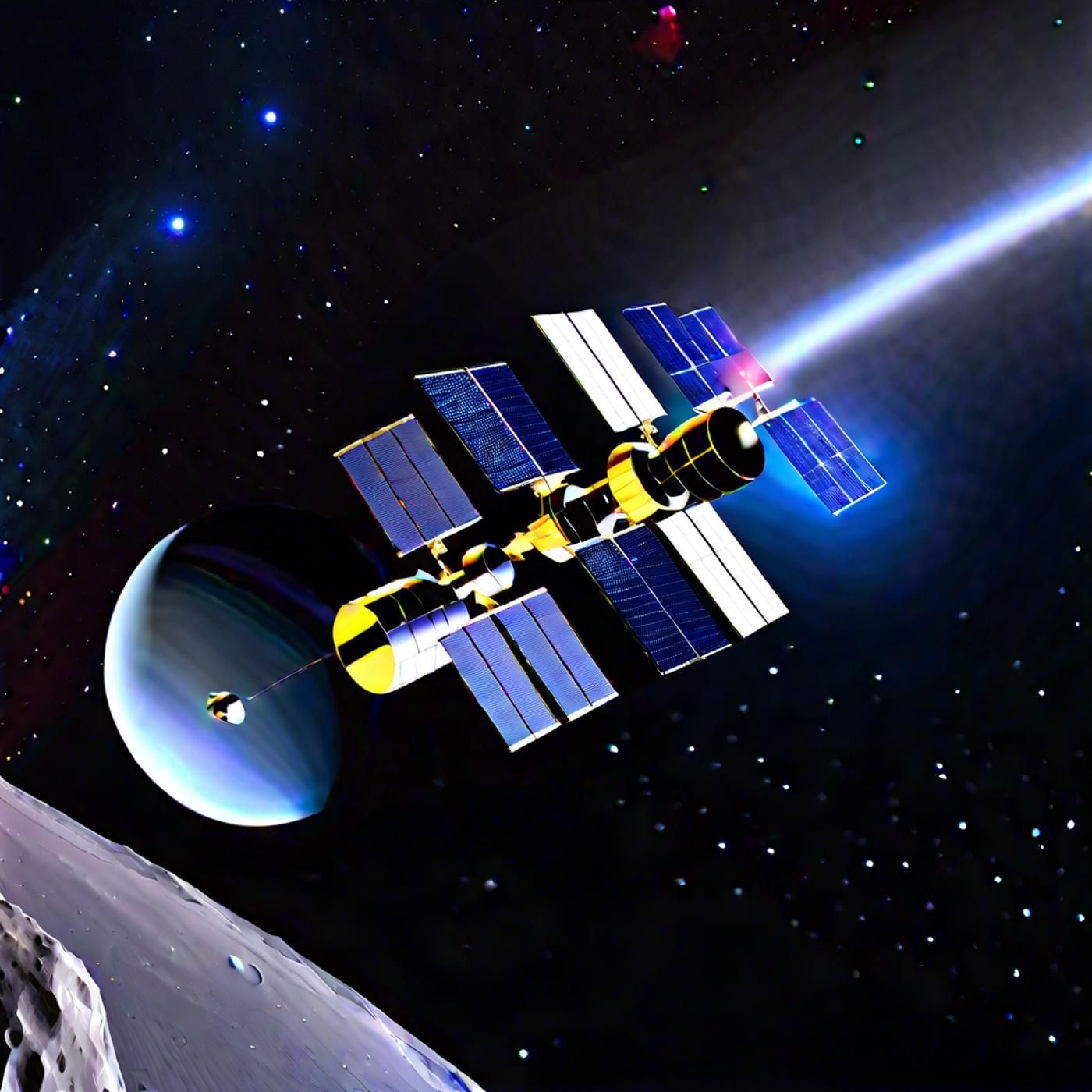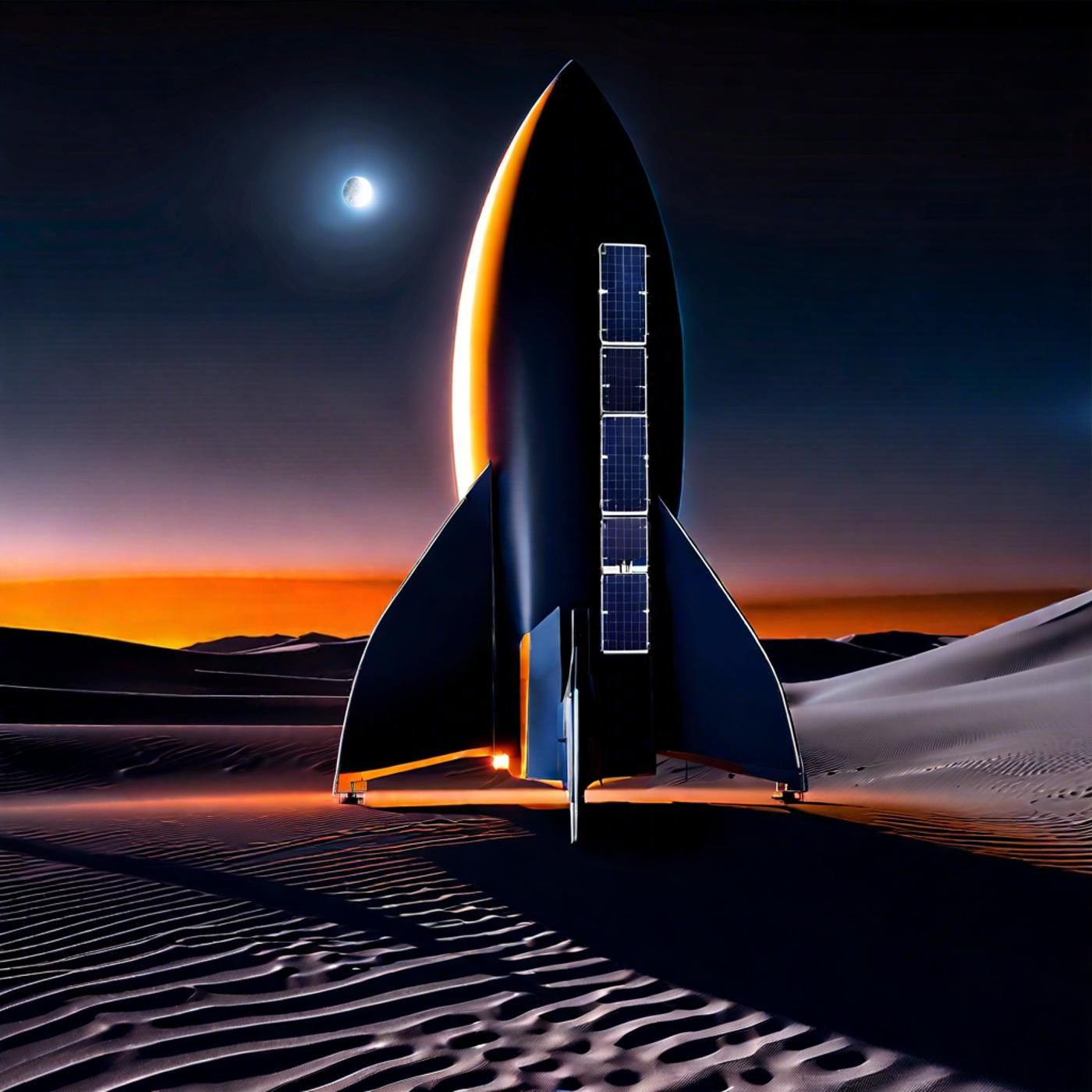S03E66: China's Lunar Triumph & T Corona Borealis Nova: Far Side Samples and Stellar Explosions
Embark on a celestial journey with today's episode of Astronomy Daily - The Podcast, where your host, Anna, guides you through the latest cosmic updates. We'll explore China's groundbreaking lunar mission, which aims to bring back ancient rocks from...
Embark on a celestial journey with today's episode of Astronomy Daily - The Podcast, where your host, Anna, guides you through the latest cosmic updates. We'll explore China's groundbreaking lunar mission, which aims to bring back ancient rocks from the moon's far side. Next, we'll discuss the potential nova eruption of T Corona Borealis, a rare event that promises to light up our night skies. We'll also bring you updates on the Hubble Space Telescope, focusing on its current status and future prospects. Additionally, we'll highlight New Zealand's burgeoning space industry and its ambitions to become a significant player on the global stage. Lastly, we'll delve into the first successful metal 3D printing performed aboard the International Space Station, a milestone for future space missions and long-term space habitation.
00:00) Astronomy Daily brings you the latest news on space exploration and astronomy
01:22) China's Chang'e six lunar probe successfully takes off from far side
03:27) The binary star system TCRB is on the brink of a nova eruption
For an astronomical experience, visit our website at astronomydaily.io for the latest news, sign up for our free newsletter, and check out exclusive sponsor deals. Connect with us on X (@AstroDailyPod) for engaging discussions with fellow space aficionados. This is Anna, reminding you to keep your gaze fixed on the heavens. Until our next stellar episode, let the cosmos ignite your curiosity and wonder. Clear skies and cosmic discoveries to all!
Support: The podcast is better with your support: https://www.bitesz.com/show/astronomy-daily-the-podcast/support/
www.bitesz.com
Sponsors:
www.bitesz.com/nordpass
https://www.bitesz.com/show/astronomy-daily-the-podcast/sponsors/
Astronomy Daily brings you the latest news on space exploration and astronomy
Anna: Welcome to Astronomy daily, your favorite place for all the latest cosmic happenings. I'm your host, Anna, and today I've got an incredibly exciting lineup just for you. We'll explore the newest advancements in space exploration, groundbreaking discoveries, and the latest updates from some of the most prominent missions happening right now. Whether you're a seasoned astronomer or just fascinated by the universe's wonders, there's something here for everyone. So sit back, tune in, and get ready to dive into a world of stellar phenomena, cosmic achievements, and the ever expanding horizons of our understanding of space. In this episode, we'll delve into China's recent lunar mission, a groundbreaking effort that aims to bring back some of the oldest rocks from the moon's far side. We'll also discuss the potential nova eruption of t corona borealis, a rare astronomical event that promises to light up our night skies. Additionally, we'll bring you updates on the Hubble Space telescope, focusing on its current status and future prospects. New Zealand's burgeoning space industry will be another highlight as it aims to become a significant player on the global stage. Lastly, we'll explore the first successful metal 3d printing performed aboard the International Space Station and what it means for the future of space missions and long term space habitation.
China's Chang'e six lunar probe successfully takes off from far side
The Astronomy daily podcast China's Chang'e six lunar probe has successfully taken off from the far side of the moon, marking an unprecedented milestone in human lunar exploration. Launched aboard an unmanned module, the probe has collected the first ever samples from this region, which had previously been unexplored due to its challenge challenging terrain. China's achievement is not only a scientific triumph, but also a testament to the nation's growing capabilities in space technology. The mission, meticulously planned and executed by the Chinese National Space Administration, involved the deployment of a drill and a mechanical arm to collect approximately 2 rock and soil from the moon's south pole Aitken basin. This gigantic crater, one of the largest known in the solar system, holds significant promise for new geological insights. Upon successfully collecting the samples, the lunar module lifted off from the moon's surface, entering a preset orbit to begin its journey back to Earth. The probe is expected to land in inner Mongolia in about three weeks. Once back, the first analyses will be conducted by scientists in China, with international researchers having the opportunity to study the samples subsequently. The far side of the moon, always facing away from Earth, presents a host of scientific opportunities, but also considerable technical difficulties. The successful collection of these samples could provide new data, potentially offering answers to questions about the moon's formation and evolution, as well as the origins of other celestial bodies. This mission follows China's previous lunar endeavors, including the Chang'e five mission in 2020, which brought back material from the moon's near side. It signals China's intention to continue exploring and understanding the moon's complex geology. With more lunar missions planned, China is positioning itself as a key player in the next era of space exploration, aiming to possibly establish a human base on the moon by 2030.
The binary star system TCRB is on the brink of a nova eruption
The binary star system t corona borealis, often referred to as TCRB, is on the brink of a nova eruption, presenting an exciting opportunity for both amateur and professional astronomers alike. Anova, uh, occurs in a binary system where a white dwarf star coexists with a companion star. In this setup, the white dwarf accretes material from its companion, leading to a buildup of hydrogen on its surface. Eventually, this material reaches a critical temperature and density, triggering a runaway nuclear fusion reaction that dramatically increases the system's brightness. Currently too faint to be seen without advanced equipment, TCRB will soon shine as brightly as Polaris, the north star, making it visible to the naked eye in moderately light polluted areas. This event is expected to take place sometime between now and September, so keep your eyes on the skies. Historically, TCRB has undergone Nova eruptions before the most recent one was documented in 1946, over 70 years ago. Each of these eruptions provides valuable data revealing more about the dynamics of such explosive events. If you are interested in observing this rare celestial event, familiarizing yourself with the corona Borealis constellation ahead of time is advisable. Using a star chart or a mobile app can help you identify the stars in that part of the sky. So when the nova eruption occurs, you will recognize the new, temporary addition to the constellation. The brightness of TTRB will peak for a few nights, but even if you miss this initial period, binoculars should suffice for viewing this new star for a few weeks afterward. For the scientific community, this nova eruption offers a treasure trove of data to understand the mechanics behind such stellar explosions. Monitoring TCRB closely will allow astronomers to study the changes in brightness and gather information that might improve our understanding of novate stellar evolution and the complex interactions within binary star systems. NASA's Hubble Space Telescope team has announced they will be holding a press conference to provide an update on the observatory status. This event has garnered significant attention as it comes just days after Hubble went into automatic safe mode due to issues with one of its remaining gyroscopes. These gyroscopes are crucial components that help the telescope maintain its orientation and focus on specific targets in space. Despite these recent challenges, NASA officials remain optimistic. The Hubble Space Telescope has faced gyroscope malfunctions in the past but has always managed to bounce back, continuing to deliver groundbreaking astronomical data. In this upcoming press conference, NASA will likely detail the steps being taken to resolve the current issues and outline their plans for Hubble's continued operations. What adds weight to this, uh, update is the involvement of two high ranking officials, Mark Clampen, the director of the agency's astrophysics division, and Patrick Kraus, Hubble's project manager. Their presence indicates that the information to be shared will be of substantial importance, possibly involving long term strategies to extend Hubble's operational life. Historically, the Hubble telescope has proven its resilience. Even now, NASA believes that Hubble can continue making critical contributions to our understanding of the universe in collaboration with other observatories like the James Webb Space Telescope. The public's interest in this update is thus a testament to Hubble's enduring legacy and its importance to both the scientific community and astronomy enthusiasts worldwide. The anticipation surrounding the conference reminds us that Hubble's journey is far from over, and its future, though uncertain, is brimming with possibilities. New Zealand is making significant strides in the realm of aerospace innovation, transforming the grassy plains on the east coast of its South island into a burgeoning hub for advanced aircraft and space exploration. The centerpiece of this ambitious endeavor is the newly established Tawaki National Aerospace center on the Kiteret space, a 25 kilometer long and three kilometer wide coastal site. This facility, backed by a substantial government investment of NZd29.4 million, represents a keystone in New Zealand's strategy to diversify its traditionally agriculture dependent economy by fostering a robust aerospace sector. Judith Collins, the nation's first space minister, highlighted the geographical benefits that make New Zealand an attractive location for aerospace activities. The region's sparse air traffic risk, reducing overwater launches, and favorable southern hemisphere latitude facilitate the placement of satellites in specific orbits. These factors are significant in propelling New Zealand into a more competitive position within the rapidly growing global space market, which saw a 50% increase in commercial space launches in 2023 alone. The success of Rocket Lab, a US listed and New Zealand founded company, underscores the potential of the country's aerospace industry. Rocket Lab has launched 44 rockets from New Zealand since 2017 and is a testament to the nation's increasing capabilities. Beyond Rocket Lab, New Zealand's space sector encompasses over 20 firms providing various space related services, and the industry employed more than 5000 people as of 2019. The Tawauki center is not just a facility but a visionary project designed to attract international collaborations and steer New Zealand towards a projected aerospace industry valuation of NZd20 billion by 2030. Already, global aerospace giants like Boeing subsidiary are utilizing the center to test cutting edge technologies. The site also aims to facilitate vertical orbital launches, positioning New Zealand as a significant player on the global aerospace stage. In summary, New Zealand's foray into aerospace is more than just an economic expansion. It's a leap towards establishing the country as a pivotal hub for advanced space and aircraft technologies, leveraging unique geographical blessings to foster innovation and industry growth. The International Space Station achieved a new milestone with its first successful metal 3d printing. This significant advancement was realized in ESA's Columbus laboratory module and marks a pivotal step forward for in orbit manufacturing. The groundbreaking technology employs a stainless steel wire fed into the printing area heated by a high power laser. As the wire dips into the molten pool, the end of the wire melts, gradually adding metal to the print. This breakthrough is monumental for several reasons. It showcases the advanced capabilities of the space station, while proving that intricate manufacturing can be done in microgravity conditions. The potential implications are vast. In the near future, astronauts could print necessary parts and tools right aboard the ISS, drastically reducing the need to send supplies from Earth. This could make long term space missions more sustainable and cost effective. The project has been a collaborative triumph involving Airbus defense and space SAS, and the Cadmos user support center in France. Overseen from the ground, four shapes have been chosen for full scale 3d printing and will later be sent back to Earth for comparison against prints made in normal gravity. This will help determine if prolonged microgravity affects the materials. The broader vision behind this technological leap is to create a circular space economy. Imagine reusing materials from decommissioned satellites or creating structures in space from scratch. While this is just the beginning, the successful execution of metal 3d printing on the ISS opens new avenues for future space exploration and habitat construction. Thank you for tuning into astronomy daily. I'm your host, Anna. Don't forget to visit our website at astronomydaily IO for more space news. To catch up on past episodes, sign up for our free daily newsletter and check out great offers from our sponsors. Please subscribe to the podcast wherever you get your podcasts, including Apple podcasts, Spotify, iHeartRadio, and YouTube music. See you next time.
New to Astronomy Daily - The Podcast?
Here are some great episodes to start with.




















